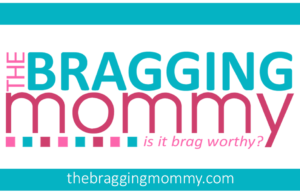
One of the most crucial yet often overlooked aspects of web design is typography. For those who aren’t in the know, typography refers to the art and technique of arranging and presenting type in a visually appealing and readable manner.
It may not be the first thing that comes to mind when designing a website, but the impact of typography on user experience and overall aesthetics cannot be overstated. Unless you hire an award-winning web design agency like G Squared, typography will probably be relegated to the backseat.
But how important is typography in web design and how can it elevate your website to new heights?
Creating Visual Hierarchy
Typography plays a vital role in establishing a visual hierarchy on a web page. Through variations in font size, weight and style, designers can guide users’ attention and highlight key information.
Headings, subheadings and body text can all be stylised differently to establish a clear hierarchy. A large, bold headline immediately draws attention, while smaller and lighter text is used for supporting content. By strategically utilising typography, you can direct users’ focus, improve readability and enhance the overall user experience.
Building Brand Identity
Typography is an integral part of brand identity and can evoke specific emotions and associations. Choosing the right typeface that aligns with your brand personality is crucial for creating a consistent and memorable user experience.
For example, a modern and sleek typeface may be appropriate for a tech startup, while a more traditional and elegant typeface may be suitable for a luxury brand. Consistency in typography across different marketing channels strengthens brand recognition and fosters trust among users.
Improving Readability
At its core, web design aims to convey information effectively. Typography plays a significant role in enhancing readability, ensuring that users can consume and understand the content without difficulty.
Factors, such as font size, line spacing and letter spacing all contribute to readability. Large blocks of text can be daunting and discourage users from engaging with the content. Breaking up text with appropriate headings, subheadings and bullet points enhances scanning and makes the information more digestible.
In addition, selecting typefaces with high legibility and avoiding overly decorative fonts helps in delivering a smooth reading experience across different devices and screen sizes.
Enhancing User Engagement
Typography has the power to evoke emotions and create a connection with users. Choosing the right font and styling can set the tone and atmosphere of a website. For instance, a playful and handwritten font may be suitable for a children’s website, while a clean and professional font conveys reliability.
Furthermore, typography can establish the personality of your brand and elicit the desired emotional response from users, leading to increased engagement and longer on-page time.
Optimising for Mobile Devices
With the rise of mobile browsing, optimising typography for smaller screens has become imperative. Mobile devices have limited screen space, so using responsive typography ensures that your content remains readable and visually appealing on different devices.
Responsive typography involves adjusting font sizes, line lengths and spacing to adapt to various screen sizes. This ensures that users can easily consume the content without the need for constant zooming or scrolling.
Summary
Typography plays a crucial role in web design by establishing visual hierarchy, building brand identity, improving readability, enhancing user engagement and optimising for mobile devices. When leveraged effectively, typography can elevate your website to new levels, captivating users and delivering an exceptional user experience.
So, the next time you embark on a web design journey, remember the power of typography and make it an integral part of your design strategy. Let your words speak volumes and create a lasting impact on your audience.
Don’t underestimate the importance of typography in web design. Embrace it, experiment with different fonts, sizes and styles, and watch as your website takes on a new life.


